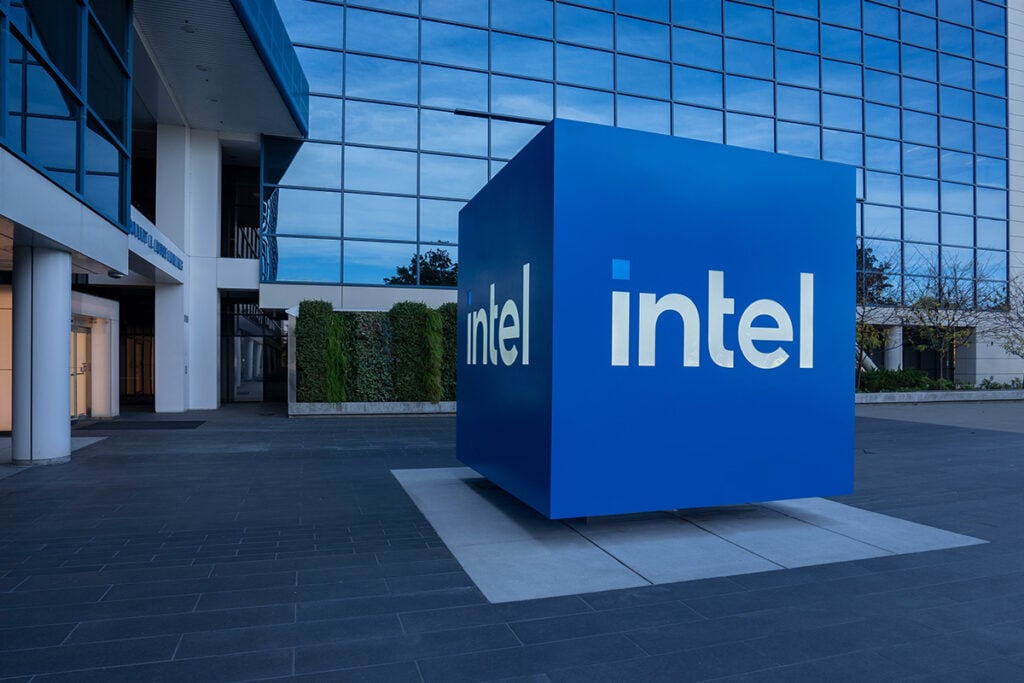TLDR
- White House confirms talks for U.S. government to acquire 10% stake in Intel through existing Chips Act grants
- Intel received $10.9 billion in Chips Act funding but only $2.2 billion disbursed so far, leaving $8.7 billion as leverage
- SoftBank invested $2 billion for 2% stake at $23 per share, indicating private investor interest despite challenges
- Company’s ambitious five-node manufacturing plan largely failed, with only first node proving successful since 2021
- Stock down 66% since January 2020 peak, now trading near book value after years of technology struggles
Intel faces a crossroads as the White House confirms discussions about the U.S. government taking a 10% stake in the chipmaker. Commerce Secretary Howard Lutnick explained the deal could swap existing government grants for equity.
The potential agreement reflects both economic and national security concerns. Officials want to secure direct returns for taxpayer money while supporting domestic chip production.
Intel currently holds $8.7 billion in remaining Chips Act funding after receiving only $2.2 billion of its total $10.9 billion allocation. The government could use this remaining funding as leverage for the equity stake.
Such a move would dilute Intel’s per-share metrics by 9%. What started as free government assistance would carry a heavy price tag.

Private Investment Interest
SoftBank Group announced a $2 billion investment in Intel this week. The Japanese firm acquired approximately 2% of Intel at $23 per share.
This price represents a small discount to Intel’s closing price that day. CNBC reported Intel is seeking similar deals with other private investors at discounted share prices.
The SoftBank deal signals some investors see turnaround potential. Intel’s shares jumped nearly 7% following the announcement.
Intel desperately needs this funding. The company held $21 billion in cash and short-term investments at the end of June.
However, Intel has burned through massive amounts of cash recently. Subtracting capital expenditures from operational cash flows, the company lost $45 billion over the past 3½ years.
In 2025 alone, Intel has lost $6 billion using this metric. New financing has become crucial for survival.
Manufacturing Strategy Failures
Intel’s problems run deeper than money. The company has struggled with manufacturing technology for over a decade.
Former CEO Pat Gelsinger launched an ambitious plan in 2021. He promised five new manufacturing processes in four years at an unprecedented pace.
The goal was catching up to Taiwan Semiconductor Manufacturing and attracting outside customers. Only the first node achieved real success.
This first node produced five different Intel chip lines from 2021 to 2023. The subsequent three nodes each failed differently.
The third node was supposed to launch Intel as a manufacturer for other companies. It barely got used, even by Intel itself.
The fourth node featured Qualcomm as the planned launch customer. That partnership never materialized, and the node appears scrapped.
Intel’s main competitor, Advanced Micro Devices, has surpassed Intel’s technology. AMD uses Taiwan Semiconductor for manufacturing instead of building its own facilities.
Intel has spent over $100 billion building these nodes since 2021. The return on investment has been minimal.
In the first half of 2025, Intel earned just $53 million from outside manufacturing customers. Meanwhile, the manufacturing segment posted a $5.5 billion operating loss.
Current CEO Lip-Bu Tan has shifted strategy completely. Instead of “build it and they will come,” he’s taking a “we’ll build it if they come” approach.
The stock trades near book value, meaning investors value it at little more than assets minus liabilities. In 2020, Intel traded at 3.8 times book value.
President Trump initially criticized Tan on social media, calling him “highly conflicted” and demanding his resignation. Intel shares fell over 3% that day.
However, after Tan visited the White House, Trump’s tone changed. He wrote that Tan and cabinet members would spend time together developing suggestions.
Intel stock rose more than 3% following Trump’s revised statement. This launched two weeks of stories about Intel’s financing options.
The company faces intense competition from Nvidia, AMD, Samsung, and Taiwan Semiconductor. While Intel can still produce advanced chips at scale, it has fallen behind in the AI market.
Analysts called the potential government stake unusual but noted Washington’s strategic interest in domestic semiconductor supply chains. The Biden administration originally granted Intel funding through five projects, including a $3 billion Defense Department contract.
Intel’s current struggles highlight the gap between ambitious manufacturing plans and execution reality. The company announced major expansion in Ohio as part of boosting American chipmaking capacity.


